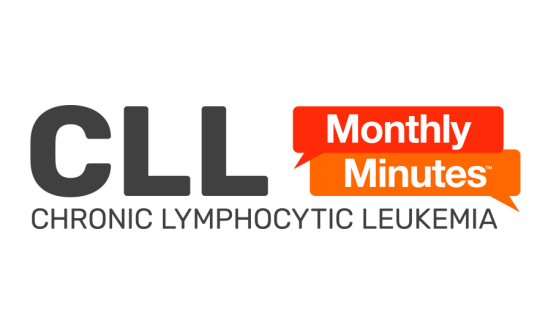The results of a new longitudinal study should help to dispel the belief that chronic lymphocytic leukemia (CLL) is an indolent (slow-growing) disease that only requires an active surveillance approach instead of active treatment.

According to long-term data presented at the 2020 annual meeting of the American Society of Clinical Oncology, the most common cause of death in patients who were newly diagnosed with CLL was the disease itself. The study results were presented by Yucai Wang, M.D., Ph.D., a hematologist oncologist who specializes in lymphoma and CLL at the Mayo Clinic in Rochester, Minnesota.
Furthermore, Dr. Wang said, the study showed that the causes of death differed according to the patients’ risk score (using the International Prognostic Index), a score that indicated the disease prognosis (outlook), which suggests that treating patients based on their actual risk score could improve patient outcomes and increase survival.
“These findings suggest that we should encourage high-risk patients to participate in clinical trials to improve CLL disease control with novel agents,” said Dr. Wang. “In low- and intermediate-risk groups, on the other hand, there should be increased efforts to reverse immune dysfunction to reduce infections and second malignancies.”
The International Prognostic Index for CLL integrates major clinical and molecular prognostic factors and stratifies patients into 4 risk groups with distinct prognoses. However, Dr. Wang explained, it was previously unknown whether the cause of death in patients with newly diagnosed CLL differed according to these risk groups.
Dr. Wang and his colleagues used the Mayo Clinic database to identify patients who were diagnosed with CLL between 2000 and 2019 and were seen in the clinic within 1 year of the diagnosis. The study included 1276 patients diagnosed with CLL this period, and their average age was 63 at diagnosis. Of these 1276 patients, 449 had low-risk CLL, 443 had intermediate-risk disease, and 384 had high-risk or very high-risk CLL.
CLL Progression Most Common Cause of Death
Among the 1276 patients with newly diagnosed CLL, 286 died during the 10-year study period. The causes of death were CLL progression (35% of patients), secondary cancer (16%), infection (6%), and a reason not related to CLL (21%), and the cause of death was unknown in 23% of the patients.
“Although CLL is a slow-growing disease, patients should be conscious of the fact that the number one cause of death in this disease is still the disease itself,” said Dr. Wang. “Moreover, when CLL progression and CLL-related complications are combined, the majority of patients die from the disease and not from something else.”
The cause of death also differed by the patients’ risk group. In patients with high-risk or very high-risk CLL, 17% of patients died because of disease progression by 5 years, and 30% died of this cause by 10 years. These data suggest that doctors may need to begin treatment earlier in patients with CLL to reduce the risk of death.
Risk Level and Treatment
“We all follow the same guidelines of when to initiate treatment, but these [study] results suggest that patients with high-risk scores have less time before treatment is needed,” Dr. Wang said, noting that patients with high-risk disease will benefit from joining a clinical trial to improve their outcome.
“Although it makes sense to treat these patients earlier, it should be demonstrated that we can improve survival or quality of life in a clinical trial setting first,” Dr. Wang said. Several clinical trials are ongoing and are investigating novel therapies that are designed specifically for patients with very high-risk CLL in the United States and in Germany.
Observation and Prevention
“There should be no rush to treat low- or even intermediate-risk patients in a clinical trial setting,” Dr. Wang noted. “Observation is still the preferred clinical approach.” At the same time, he emphasized the importance of counseling patients with CLL on screening and vaccinations as prevention strategies.
“We know for a fact that these issues don’t get discussed in the community as much as they should, but patients with CLL should go to an academic medical center to receive counseling about vaccinations, age-appropriate cancer screening, and dermatology visits in order to minimize risk,” Dr. Wang concluded.
“These data show that low- and intermediate-risk patients are just as likely to die from infection or a second cancer as they are from the disease itself.”











